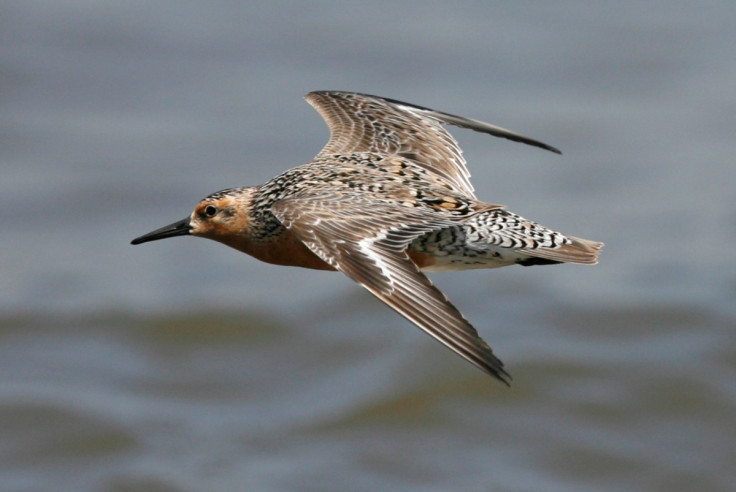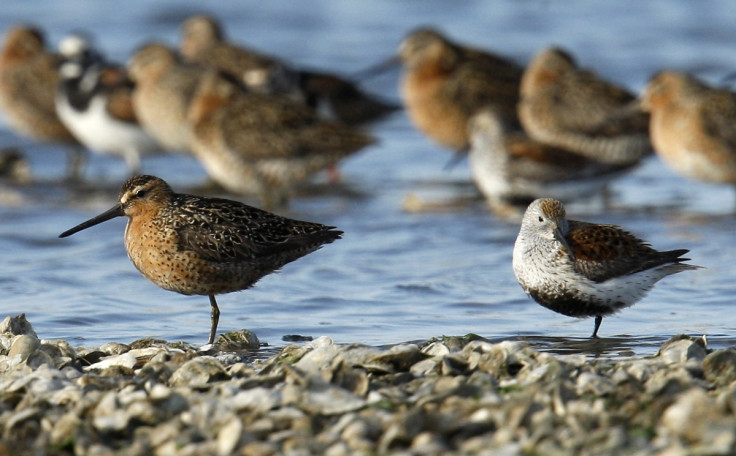Climate change 'shrinking' Arctic migratory birds

Warmer temperatures in the Arctic are shrinking the size of far-flying migratory birds and weakening their struggle to survive, a study says.
Red knot shorebirds (Calidris canutus) fly up to 14,000km (9,000 miles) to the Arctic Circle every summer to breed and return to the tropics for the winter.
Scientists at the Royal Netherlands Institute for Sea Research say climate change is causing snow at the bird's breeding grounds to melt earlier, resulting in chicks hatching too late to feed on insects that come out during the thaw.
The result is malnutrition in the young birds, which grow to a shorter stature than some of their peers and possess smaller beaks.
This change in size can be potentially deadly for the birds when they arrive at their tropical wintering grounds, as the shorter bills make it harder for them to dig up and eat molluscs from the ground.
These shorter-beaked birds were recorded by scientists subsisting on less nutritious seagrass on the coast of Mauritania, with their survival rate only half as that of the larger chicks.
The paper is published in the journal Science.
Population decline
The report describes red knots as one of the world's most northerly breeding birds and one of the farthest flying migrants.
"It is nesting in northern Taimyr (Russia) and is wintering in tropical coastal ecosystems, notably the Banc d'Arguin, Mauritania," said lead author Jan van Gils.
Analysis of satellite images has shown that the red knot's breeding grounds have progressively melted earlier — at a rate of about half a day per year — leading to the spring thaw arriving two weeks earlier than it did 33 years ago.
"The retreat of the snow marks the start of the insect peak in the Arctic; the main food source of the chicks before they leave the Arctic," Van Gils explained.
"Juvenile red knots that we caught along the Baltic coast while on their way to West Africa were smaller and had shorter bills after warm Arctic summers."

Four out of five birds born with longer bills survived into adulthood, but this rate fell to just 40% among the shorter-beaked birds, the study found.
"The reason for this bill-length dependent mortality is quite straightforward. Only larger birds with long bills were able to reach the relatively deeply burrowed bivalves at Banc d'Arguin," Van Gil said.
"The poor survival of shrunken first-year birds clearly contributes to the current population decline seen in red knots nowadays."
The red knot does not feature on the IUCN Red List of threatened species at present, but researchers fear this could soon change as changes in the bird's body size and shape make it harder for it to survive.
Van Gil added: "We... propose that changes in body size and shape, and the negative population dynamical consequences will be widespread among other High Arctic-breeding species in the future.
"This is a very serious ecological effect which requires our immediate attention."
© Copyright IBTimes 2025. All rights reserved.






















